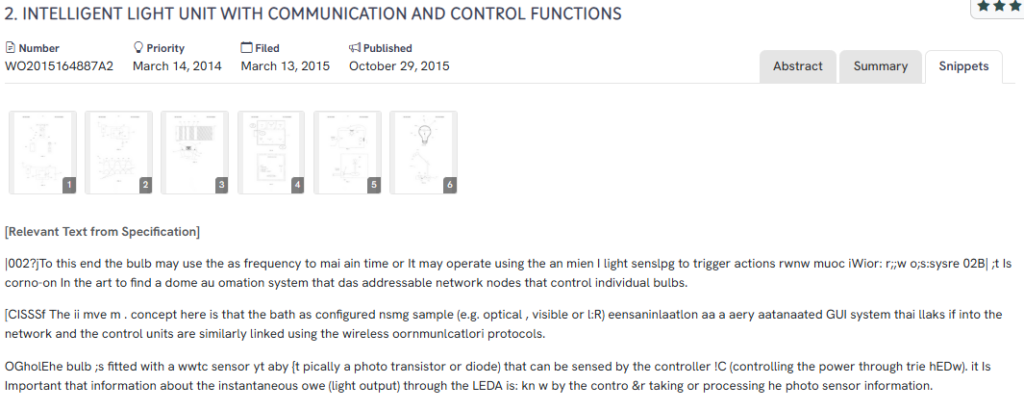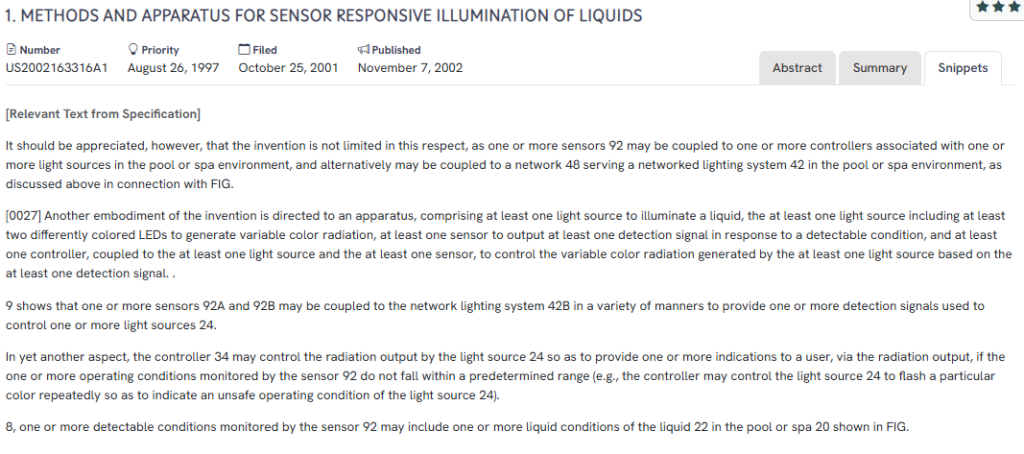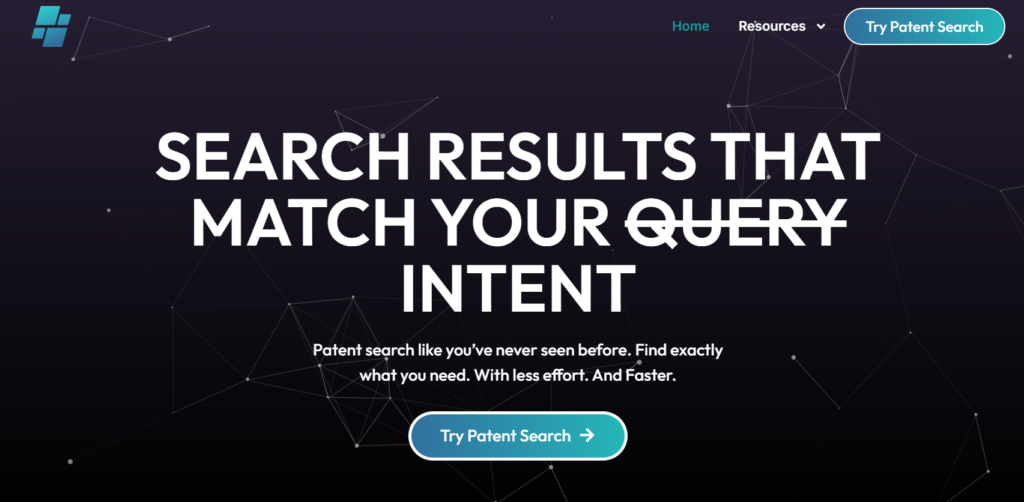Some patents draw little notice. Others, like US12134913B2, capture attention because the innovations they protect find relevance in rapidly evolving industries.
Recently mentioned in Elliptic Works LLC v. Fluidra North America, LLC, this patent has sparked interest among those tracking innovation in automated water management systems. While we won’t explore the legal backdrop here, it’s worth noting how the patent’s focus on sensor-based monitoring, remote interfaces, and adaptive control aligns with the growing ecosystem of smart pool and spa technologies.
In this article, we’ll use the Global Patent Search (GPS) platform to identify patents that reflect similar structural logic or functional goals. Whether you’re developing in this space or investigating overlaps, this feature-level analysis offers a practical, research-driven perspective on technologies that may share common ground with US12134913B2.
Understanding Patent US12134913B2
US12134913B2 outlines a system for using visible light to wirelessly communicate data between submerged components in a pool environment. The invention leverages Visual Light Communication (VLC) technology. It specifically involves LEDs and photodiodes to transmit encoded control or monitoring signals through water. Thus, it enables remote or automated management of pool devices without the need for hardwired connections.

Its key features include
#1. VLC-based communication: Uses modulated LED light pulses to transmit encoded data through water to a submerged photodiode sensor.
#2. Two-way control architecture: Enables bi-directional signaling between devices like pumps, filters, valves, or lighting systems using VLC assemblies.
#3. Automated device management: Allows pool components to respond automatically to environmental changes or remote commands via decoded light signals.
#4. Wireless integration with computing devices: Communicates collected data to a central computing system or mobile device for monitoring, analysis, and remote control.
This section gives a foundational understanding of the patented system’s architecture and how it enables next-generation, sensor-driven pool automation.
Similar Patents As US12134913B2
To explore the innovation landscape surrounding US12134913B2, we ran the patent through the Global Patent Search (GPS) tool. Below is a quick glimpse of the GPS tool in working.

Source: Global Patent Search
This surfaced a list of related patents that share core concepts in optical communication, intelligent sensing, and wireless control for environmental systems. Below, we highlight key references that illustrate how similar challenges,such as remote signaling and system-level automation, have been tackled in different contexts.
#1. WO2015164887A2
This international patent WO2015164887A2 , published in 2015, outlines a forward-looking approach to intelligent lighting systems using optical sensing and wireless communication. It introduces a method where bulbs equipped with photodiodes and controllers can dynamically interact with a networked control system. It uses visible or infrared light, paving the way for highly automated lighting environments.

What this patent introduces to the landscape?
- Wireless control via optical sensing: Describes a bulb fitted with light sensors (such as photodiodes or photo transistors) capable of detecting light-based signals to adjust behavior or communicate with a controller.
- Networked GUI architecture: Envisions a fully automated graphical user interface system where intelligent bulbs act as addressable nodes in a wireless communication network.
- Sensor-driven output regulation: Emphasizes the use of real-time light sensing to feed back power or brightness data to a control system, allowing for dynamic power adjustment.
- Infrared and visible light communication: Utilizes optical channels, including visible and IR spectrums, for control signaling, minimizing the need for hard-wired connectivity.
How it connects to US12134913B2?
WO2015164887A2 aligns with the subject patent’s emphasis on visible light communication (VLC) and environmental automation. While WO2015164887A2 focuses on lighting systems, it reflects comparable principles:
- Use of photo sensors for feedback
- Wireless communication via optical signaling
- Intelligent node-based control systems
- Elimination of physical wiring for signal transmission
Why this matters?
This patent reinforces the broader relevance of VLC in embedded control systems. The technical foundation, optical sensing, feedback-driven control, and networked automation is applied to smart lighting. This illustrates how US12134913B2 fits into an expanding field where light-based data transmission is replacing legacy wired systems.
#2. JP2013546256A
This Japanese patent JP2013546256A, published in 2013, presents an underwater communication system that uses visible light to transmit and receive data through water. It introduces a method for converting electrical signals into optical signals using LEDs, and back into data signals. It uses submerged receivers, enabling real-time underwater data transfer.

What this patent introduces to the landscape?
- Multi-mode light transmission: Details a system with three LED operation modes: constant lighting, data communication via light signals, and off mode—providing adaptive control over communication functions.
- Water-based optical signal conversion: Describes how submerged receiving components detect visible light signals and convert them into electrical signals, which are then turned into usable data.
- High-speed underwater data transfer: Emphasizes the use of LED light to achieve fast communication speeds in underwater environments, ideal for applications where wired solutions are impractical.
- Modular architecture for transmission components: Breaks down the transmission unit into specialized blocks, including a signal size controller and LED drive mechanism, enhancing reliability in harsh aquatic conditions.
How it connects to US12134913B2?
JP2013546256A closely mirrors the core functionality of US12134913B2, particularly in its use of:
- Visible light communication (VLC) within submerged environments
- LED-based signaling and photodiode-based reception
- Electronic conversion of light signals to data commands
- A signal processing structure integrated into the transmitter/receiver setup
Why this matters?
This patent demonstrates how VLC systems have already been applied in underwater contexts, supporting real-time, signal-based control and data transmission. By highlighting early applications of this technology, JP2013546256A helps contextualize US12134913B2 as part of a maturing field that uses light not just for illumination, but as a core medium for device communication under water.
#3. CN104852870B
This Chinese patent, CN104852870B, granted in 2018, introduces a system for broadcasting navigation or hydrological information using light-based signaling. By encoding sensor data into modulated light pulses, it allows environmental data to be transmitted via light flashes. It is a practical approach for marine or aquatic infrastructure.

What this patent introduces to the landscape?
- Sensor-driven light signaling: Uses sensors to collect hydrological data (such as water level or flow), which is then encoded into a signal to control the timing of light pulses.
- Encoding and modulation architecture: Features dedicated modules to convert environmental data into timing signals that modulate the light output for structured transmission.
- Transmission via light scintillation: Relies on timed blinking of LEDs to relay information over water, creating a visually readable and machine-decodable light pattern.
- Power amplification for signal integrity: Amplifies timing signals before they reach the light source, ensuring the light signal remains strong and consistent in outdoor or aquatic settings.
How it connects to US12134913B2?
While CN104852870B is geared toward environmental and navigation applications, it shares critical technological themes with US12134913B2:
- Use of visible light to transmit encoded data
- Light modulation based on sensor readings
- Structured control of LED output for data transmission
- A similar encode-modulate-blink model that underpins communication
Why this matters?
This patent highlights how VLC is being deployed to encode real-time data into visible light patterns for aquatic environments. The approach utilizes blinking light signals to communicate sensor data. It parallels the strategies in US12134913B2, reinforcing a shared architectural logic for wireless, light-based communication systems in water-centric applications.
#4. US2002163316A1
This early U.S. application, US2002163316A1, published in 2002, outlines a system where light sources in a pool or spa respond dynamically to environmental conditions. The invention uses sensors to detect parameters like liquid quality, then alters LED illumination, such as color or blinking patterns. Based on those readings, it creates a feedback loop between fluid sensing and lighting control.

What this patent introduces to the landscape?
- Sensor-controlled LED behavior: Connects one or more environmental sensors to LED light sources, allowing the system to respond to specific fluid conditions by adjusting color or brightness.
- Variable color radiation via multi-LED setup: Uses multiple LEDs of different colors to create variable lighting effects, controlled in real time by the system’s sensors.
- Safety signaling via light patterns: Includes provisions to signal unsafe operating conditions through flashing or color-shifting LEDs, making light an informative indicator.
- Networked lighting architecture: Envisions a setup where sensors, controllers, and lights communicate over a networked infrastructure for coordinated response in spa or pool environments.
How it connects to US12134913B2?
US2002163316A1 shares a conceptual lineage with US12134913B2 in its use of:
- Sensor data to control LED behavior
- Environmental monitoring through embedded electronics
- LED-based signaling for operational feedback
- Modular connectivity between control and lighting components
Why this matters?
This reference offers an early example of how smart pools and spas can integrate sensing, communication, and control. It is focused more on lighting feedback than data transmission. Its approach to dynamic light control based on environmental triggers helps frame the evolution toward the VLC-based automation found in US12134913B2.
#5. CN103295386A
This Chinese patent, CN103295386A published in 2013, proposes a comprehensive system for monitoring and control based on visible light communication. It integrates sensors, a central control unit, and a light-based command transmission mechanism. It uses white LEDs, effectively merging lighting with wireless control capabilities.

What this patent introduces to the landscape?
- Sensor-to-light signal control loop: Sensors detect environmental parameters and transmit this data to a central control unit, which then sends encoded control instructions via an LED-based optical signal.
- White LED-based VLC system: Emphasizes the dual-purpose role of white LEDs, capable of both illumination and high-speed data transmission through visible light modulation.
- Structured signal chain: Establishes a flow from environmental sensing → control logic → optical signal emission → device response, outlining a complete communication cycle.
- Terminal equipment control via light: Final devices respond to received light signals by executing specific actions, allowing for hands-free, wireless environmental control.
How it connects to US12134913B2?
CN103295386A shares key operational elements with US12134913B2:
- VLC-driven device control
- Sensing input that influences transmission logic
- Use of LEDs for both data and illumination
- A central control system that links sensors and output actions through optical signaling
Why this matters?
This patent reinforces the technical path that US12134913B2 continues, using light not only as a visual output but as a communication layer. The structured control model, wireless architecture, and reliance on visible light. Both transmission and reception are highly aligned with modern smart pool systems.
How to Find Related Patents Using Global Patent Search?

Exploring related patents isn’t just about legal due diligence; it’s a vital step in understanding how technologies evolve, intersect, and adapt across industries. The Global Patent Search (GPS) tool simplifies this process by uncovering inventions that share structural, functional, or conceptual similarities with your patent of interest. Here’s how it works:
1. Start with a patent number: Enter the target patent number into the GPS interface. The platform converts it into an AI-optimized query, with optional controls to fine-tune using domain-specific keywords or technical descriptors.

2. Review contextual snippets: Rather than relying solely on claims, GPS highlights where system-level concepts appear in other filings through digestible, human-readable snippets that reveal architectural or functional overlap.
3. Uncover adjacent inventions: Discover patents that tackle similar challenges or use comparable systems, even if they differ in application. This enables broader research across use cases and jurisdictions.
4. Compare ideas, not legal language: GPS focuses on the “what” and “how” of technology, giving you a side-by-side view of relevant solutions without the complexity of legal interpretation.
5. Expand across technical domains: Whether you’re researching pool automation, optical communication, or embedded systems, GPS offers a fast, intelligent way to understand the broader landscape.
To dive deeper, check out our blog on patent search tools, or browse the GPS glossary for a breakdown of key technical and legal terms.
Global Patent Search turns surface-level insights into strategic research, helping teams uncover patterns, trace innovation pathways, and identify overlapping systems, all without guesswork.
Disclaimer: The information provided in this article is for informational purposes only and should not be considered legal advice. The related patent references mentioned are preliminary results from the Global Patent Search (GPS) tool and do not guarantee legal significance. For a comprehensive related patent analysis, we recommend conducting a detailed search using GPS or consulting a patent attorney.




